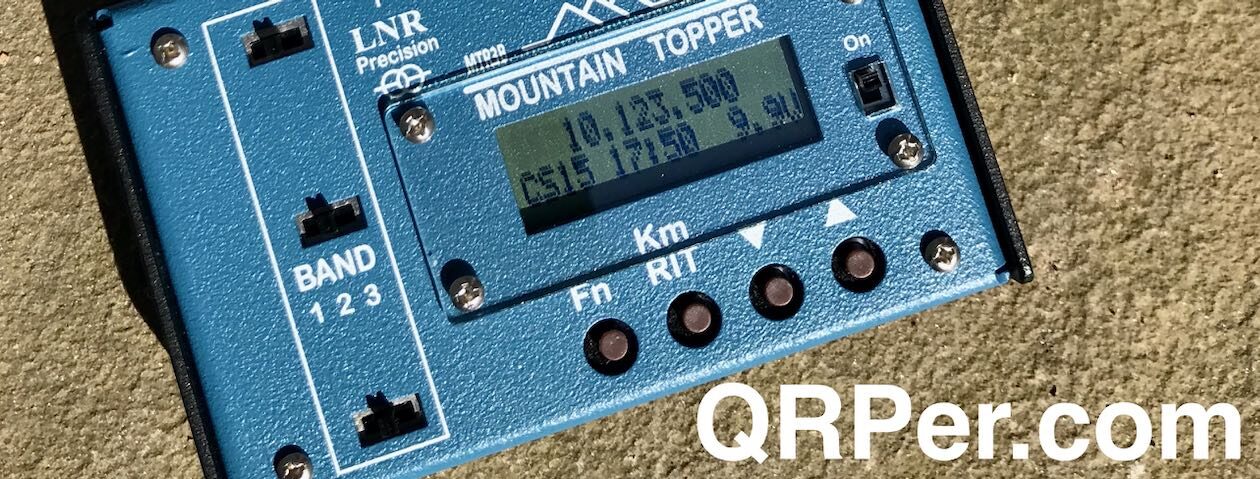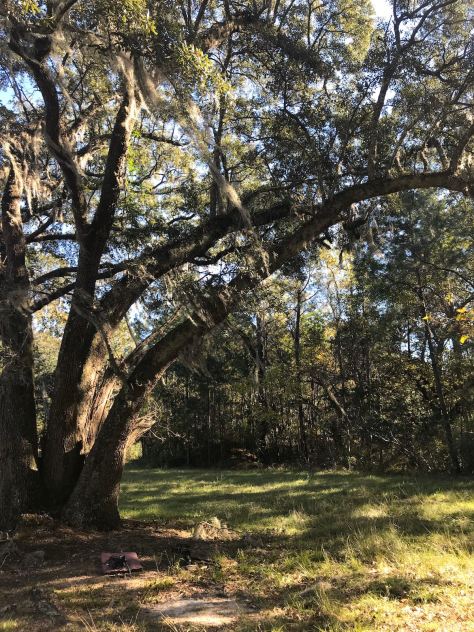On Monday, March 22, 2021, I performed three QRP field activations in one day. I started off the day with a visit to Three Top Mountain Game Land, and then headed to Mount Jefferson State Natural Area for a POTA and SOTA activation before heading to New River State Park.
When plotting my multi-site activation day, I picked Mount Jefferson because it’s a SOTA entity (W4C/EM-021). I only realized later that it’s also a POTA entity (K-3846). I mistakenly assumed Mount Jefferson was a county park rather than an NC state park. To do both a POTA and SOTA activation simultaneously is ideal!
Mount Jefferson (W4C/EM-021)
This was my first visit to Mount Jefferson and, frankly, I wasn’t sure what to expect in terms of hiking.
The park itself is amazing! North Carolina parks never let me down.
The entrance is near the base of the mountain and very close to the town of West Jefferson. The park road climbs up the side of Mount Jefferson –there are a number of spots to park, hike, and picnic.
I had not checked the trail map in advance, but I had read that the summit trail was accessible from the parking and picnic area at the end (top) of the park road.
I hopped out of my car, grabbed my SOTA pack, and very quickly found the trail head.
The trail is impeccably maintained and wide enough for vehicle use (no doubt these trails double as access for tower maintenance on the summit).
The hike to the summit from the parking are was incredibly short–about .3 miles. Normally, I’d want a much longer hike, but since I was trying to fit three site activations in a span of four hours, I didn’t complain.
On top of the summit, one is greeted by a typical cluster of transmission towers.
While I appreciate checking out antennas and towers, these are never a welcome site because they can generate serious QRM, making a SOTA activation difficult.

I searched around and found a spot to set up well within the activation zone but giving me a bit of distance from the towers.
Gear:
- Yaesu FT-817ND
- Elecraft T1 ATU
- Chameleon CHA MPAS Lite
- CW Morse “Pocket Paddle”
- GoRuck Bullet Ruck
- Tom Bihn Large Travel Tray
- Portable Zero FT-817 Side Rails and Bail
My Yaesu FT-817ND was desperate to get a little SOTA action, so I decided to pair it with the Chameleon CHA MPAS Lite using the Elecraft T1 ATU to find matches.
After putting the FT-817 on the air, I was very pleased to hear that the nearby transmission towers and power lines weren’t causing any noticeable interference. This was a very good sign because, frankly, propagation was very unstable that day and I had real concerns about being able to work stations on 40 meters.
I hopped on the air and quickly realized I’d forgotten to hook my external battery up to the Yaesu FT-817ND. This meant I was running something closer to 2.5 watts as opposed to a full 5 watts. I decided to attempt the activation without the external battery and add it if needed.
I started operating on 20 meters and was very pleased to quickly rack up a number of contacts. I could tell that most of these contacts were via SOTA because I recognized the calls and primarily SOTA chasers.
Within 11 minutes, I worked 10 stations on 20 meters in CW. I was very pleased with how quickly those QSOs rolled in and how easily I logged the four needed for a valid SOTA and 10 needed for POTA activation–all on 20 meters.
Next, I moved to 40 meters where I worked two stations and 30 meters where I worked one. For sure, 20 meters was a much stronger band than 40 and 30 turned out to be.
After working 13 stations, I packed up.
Obviously, 2.5 watts was plenty for this activation!
I would have loved to stay longer, but frankly, I needed to stick to my schedule because I had one more park to fit in that day! (More on that in a future post and video!).
Here’s my QSOmap for the Mount Jefferson activation:
And here’s my full log:
Video
Even though I was a bit pressed for time, I still made one of my real-time, real-life videos of the entire activation. I hope you enjoy:
Next up will be an activation of New River State Park. I hope to post this early next week.
Thank you so much for reading this report!
Do you enjoy QRPer.com?
Please consider supporting us via Patreon or our Coffee Fund!
Your support makes articles like this one possible. Thank you!




























































